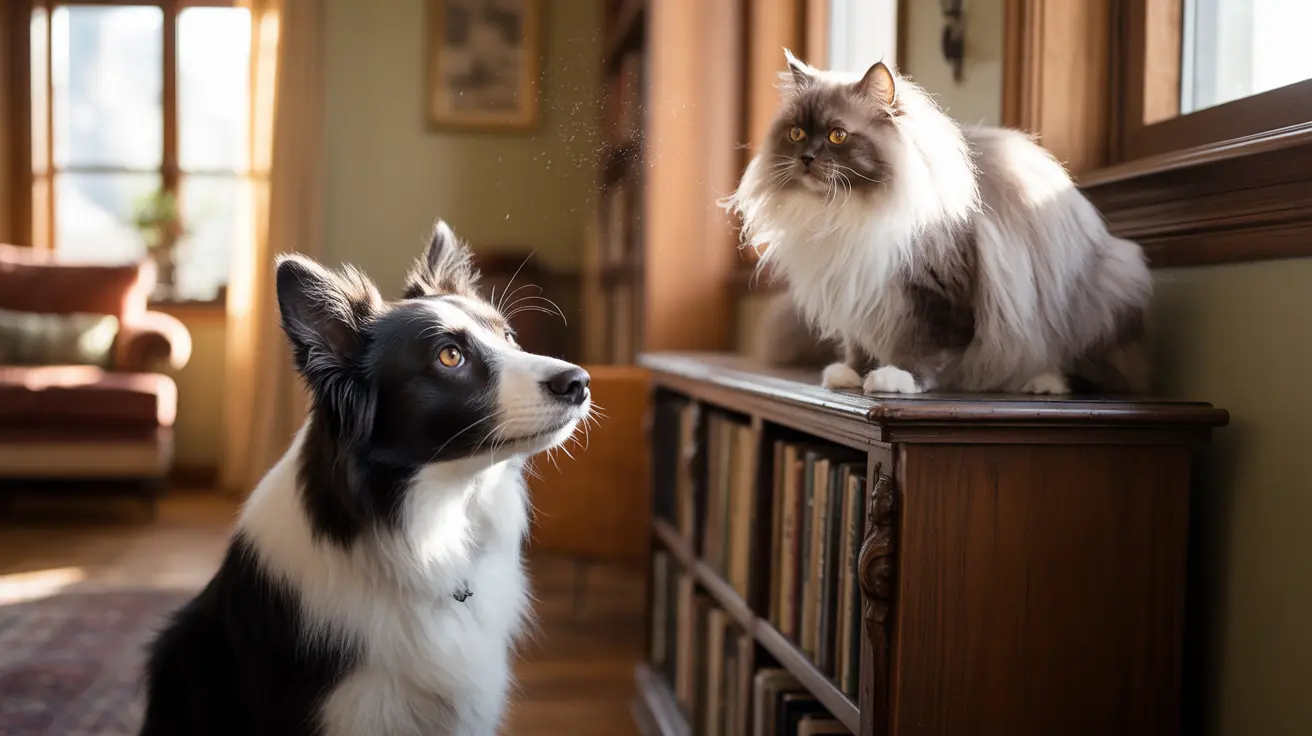Introduction
Border Collies, known for their exceptional intelligence and herding instincts, can make wonderful companions - but many potential pet owners wonder: are Border Collies good with cats? The answer isn't simply yes or no. While these intelligent herding dogs can absolutely live harmoniously with feline friends, success depends on several key factors, including proper introduction, training, and management of their natural instincts.
In this comprehensive guide, we'll explore everything you need to know about creating a peaceful household where Border Collies and cats can thrive together. From understanding herding behaviors to implementing effective training strategies, you'll learn how to foster a positive relationship between these two different species.
Understanding Border Collie Temperament
Border Collies possess a unique combination of traits that can both help and hinder their relationship with cats. Their exceptional intelligence makes them highly trainable, while their herding instincts might initially pose challenges when interacting with feline companions.
These dogs rank consistently as one of the most intelligent breeds, capable of learning complex commands and understanding nuanced behavioral expectations. This intelligence can be particularly helpful when teaching them how to properly interact with cats.
Natural Herding Instincts
The herding drive in Border Collies is strong and innate. They may instinctively try to herd cats by stalking, staring, or circling them. While this behavior isn't aggressive, it can be intimidating to cats and needs to be properly managed through training and supervision.
Setting Up for Success
Creating a harmonious relationship between your Border Collie and cat starts with proper preparation and management. Here are essential steps to take:
Designated Spaces
Create separate areas for both pets where they can retreat and feel safe. Cats especially need high places and escape routes that are inaccessible to dogs. Install cat trees, wall shelves, and use baby gates to create cat-only zones.
Resource Management
Ensure both pets have their own food bowls, water dishes, beds, and toys. Keep the cat's litter box in a location that's accessible to them but out of the dog's reach.
The Introduction Process
Proper introduction is crucial for long-term success. Start with separate spaces where each pet can smell and hear the other without direct contact. Gradually progress to supervised visual contact through a baby gate or screen door.
Training Requirements
Teaching your Border Collie basic commands like "leave it," "stay," and "come" is essential before allowing direct interaction with the cat. These commands provide necessary control during potentially exciting moments.
Managing Daily Life Together
Once initial introductions are complete, ongoing management is key to maintaining peaceful coexistence:
- Regular exercise for your Border Collie to prevent excess energy
- Supervised interactions until trust is fully established
- Positive reinforcement for calm behavior around the cat
- Immediate intervention if herding behaviors emerge
Frequently Asked Questions
Are Border Collies typically good with cats in the same household?
Border Collies can be excellent companions for cats when properly trained and socialized. Their intelligence and ability to learn make them adaptable to living with felines, though their herding instincts need to be managed.
How can I successfully introduce a Border Collie to my cat to ensure they get along?
Use a gradual approach starting with separate spaces, progressing to visual contact through barriers, and finally supervised direct interaction. Always ensure the cat has escape routes and never force interaction.
What herding behaviors should I expect from a Border Collie around cats, and how can I manage them?
Expect stalking, staring, and circling behaviors. Manage these through consistent training, redirection, and positive reinforcement for calm behavior. Never punish herding instincts; instead, channel them into appropriate activities.
Does socializing a Border Collie puppy with cats improve their compatibility as adults?
Yes, early socialization significantly improves the likelihood of positive relationships with cats. Puppies exposed to cats between 3-14 weeks of age typically develop better understanding and appropriate behavior around felines.
What are the best ways to keep a Border Collie and a cat safe and comfortable living together?
Provide separate resources, create safe spaces for both pets, maintain consistent training, ensure adequate exercise for the Border Collie, and always supervise interactions until trust is well-established.
Conclusion
With proper training, management, and patience, Border Collies can indeed be good with cats. Success lies in understanding and respecting both animals' needs while consistently working to create positive associations between them. Remember that every pet is unique, and while some pairs may become best friends, others might simply learn to coexist peacefully - both outcomes can be considered successful.






